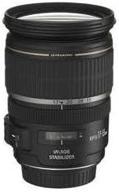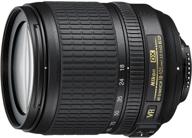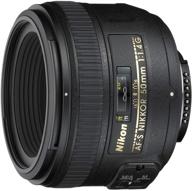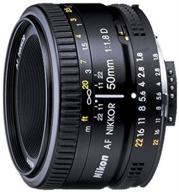
Review on Nikon 35mm f/1.8G Auto Focus Lens for Nikon DSLR Cameras - Black (Model 2183) by Akmal ᠌

The purchase brought only positive emotions.
When I first started using it, it was a free bonus for purchasing the whale, but now it always costs the same as a regular one. A lot of people have written articles about curved autofocus. In this situation, we can't forget about the material. You can verify this by installing a depth of field calculator on your phone, such as DoF Calc. When shooting an item from a distance of two meters, the sharpest field you will have is only twenty centimeters wide. That is, only 10 centimeters in either direction can be measured out from the point of sharpness. If you or the subject move more than 10 centimeters between the time the camera is focused and the time you press the shutter button, the picture will be fuzzy even though it was taken properly. In addition, this is not a lens obstruction, but rather a feature that you should be aware of. So, it will not be able to take a picture of a person swinging with an aperture of 1.8 while the camera is set to its regular autofocus setting (non-tracking). To clarify, photographing from a distance of two meters with interesting lenses in order to achieve FX is not feasible. For instance, the depth of field from two meters away with an 85mm lens set to f/1.2 is only four centimeters! In other words, if you concentrate on the very tip of the nose, then the pigment on the cheeks will already be uneven. And if you swung it even a little bit, the whole frame is often going to be in soap. And what, do you think it's a faulty lens?
- Lightweight, compact, and has a nice appearance when mounted on the d5100. I bought the 18-55 as an addition to the kit for the purpose of taking portraits; however, I ended up not using the kit at all because, with the exception of the viewing angle, this 35mm is much more superior to the kit in every other regard. When compared to a whale, the aperture of a 35mm is approximately seven times higher (you can shoot at 100 iso with the same shutter speeds as with a whale at 800 iso under the same conditions), it creates a background blur that is significantly better than that of a whale, and it focuses significantly more quickly and precisely. The percentage of sharp images taken with this lens is disproportionately higher than those taken with the 18-55, which is actually quite pleasing given the depth of field is much reduced while shooting at an aperture of 1.8 as opposed to 4.5. (whale aperture at 35mm).
- viewing angle. Yet, this is not a drawback but rather a feature of the product. You only need to have the awareness that panoramic photos cannot be taken successfully. To accomplish this, you will require a different lens.
New products
Comments (0)
Similar reviews
Top products in 👓 Lenses

Canon EF-S 17-55mm f/2.8 IS USM Lens - Compatible with Canon DSLR Cameras (Lens Only)

73 Review

New Nikon 18-105mm Vibration Reduction 📷 Zoom Lens with Auto Focus for Nikon DSLRs

104 Review

📷 Nikon AF-S NIKKOR 50mm f/1.4G Lens with Auto Focus: Perfect for Nikon DSLR Cameras

76 Review

Nikon 50mm f/1.8D Lens: Perfect for Nikon DSLR Cameras!

97 Review






